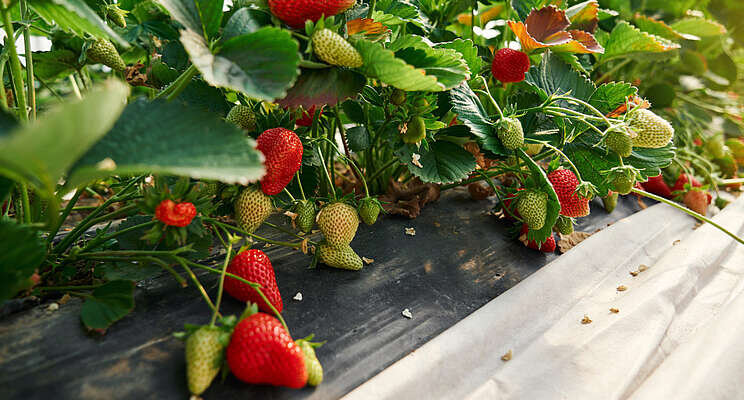CEA strawberry operations
Added on 21 August 2022

Western flower thrips (Frankliniella occidentalis) are among the most damaging greenhouse pests especially on strawberries. Adult thrips are slender insects about 1 mm long. Thrips feed by piercing the cells and sucking out their contents, leading to silver/gray patches. Thrips especially feed on growing points and flower buds, leading to distortion of these tissues as they develop. Greenhouse strawberry crops are sensitive to thrips damage which can cause severe plant damage and unmarketable fruit. This article will introduce the issue of thrips in strawberries, describe common symptomology, present an initial framework for integrated pest management and conclude with some additional resources.
In the United States, leafy greens, microgreens and other fast turnaround crops have historically been popular among controlled environment agriculture (CEA) growers. Recently, CEA companies are beginning to consider strawberries as another crop because it is also a highly perishable and higher value crop.
Unlike leafy green and herb production that often take less than two months to complete a full growing cycle, strawberry plants are frequently grown for a longer duration of time. Consequently, the longer a plant is placed in a CEA operation, the risk of a pest infestation generally increases.
Continue reading.
Photo created by serhii_bobyk - www.freepik.com
Source: Produce Grower
More news















